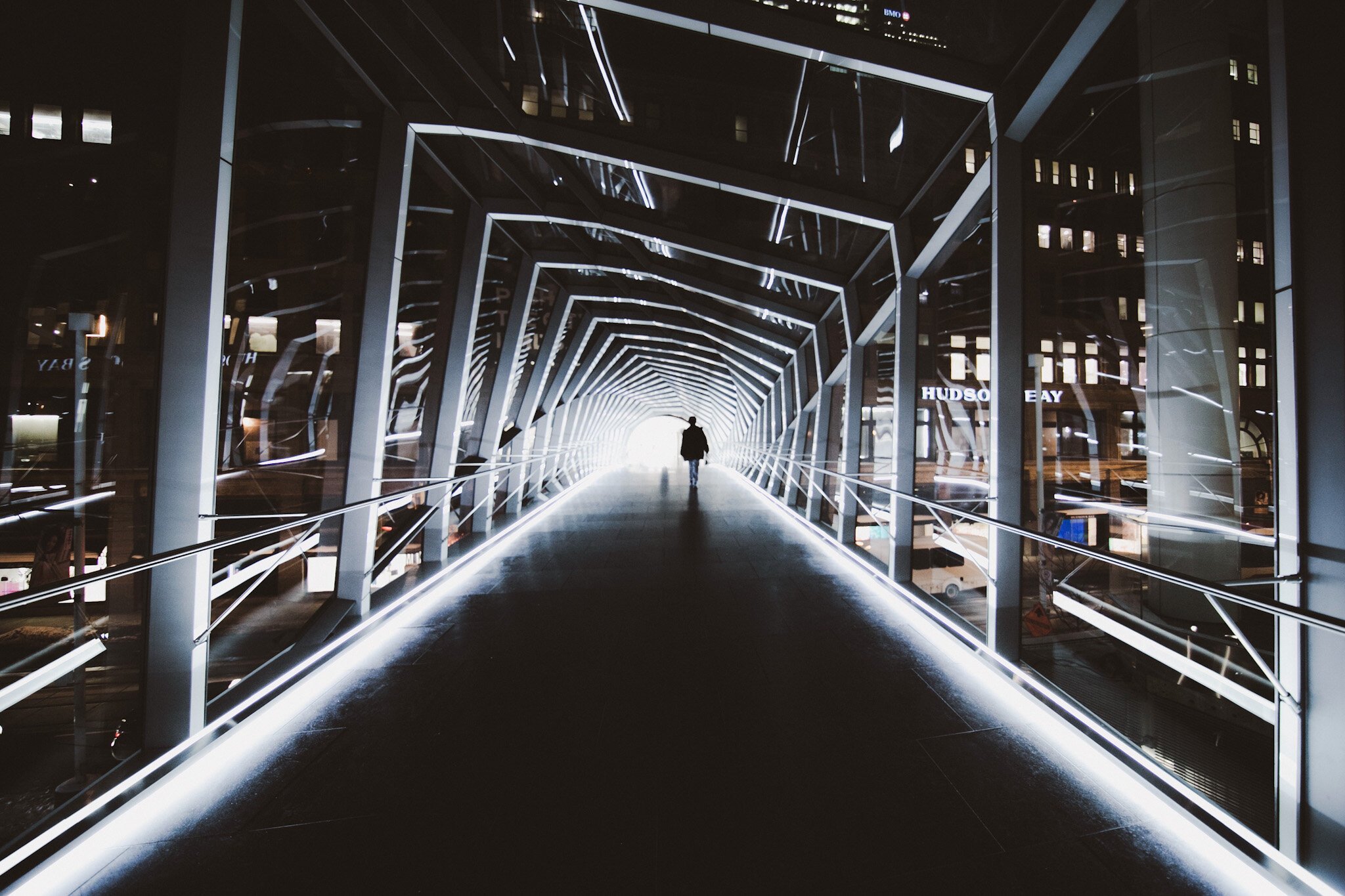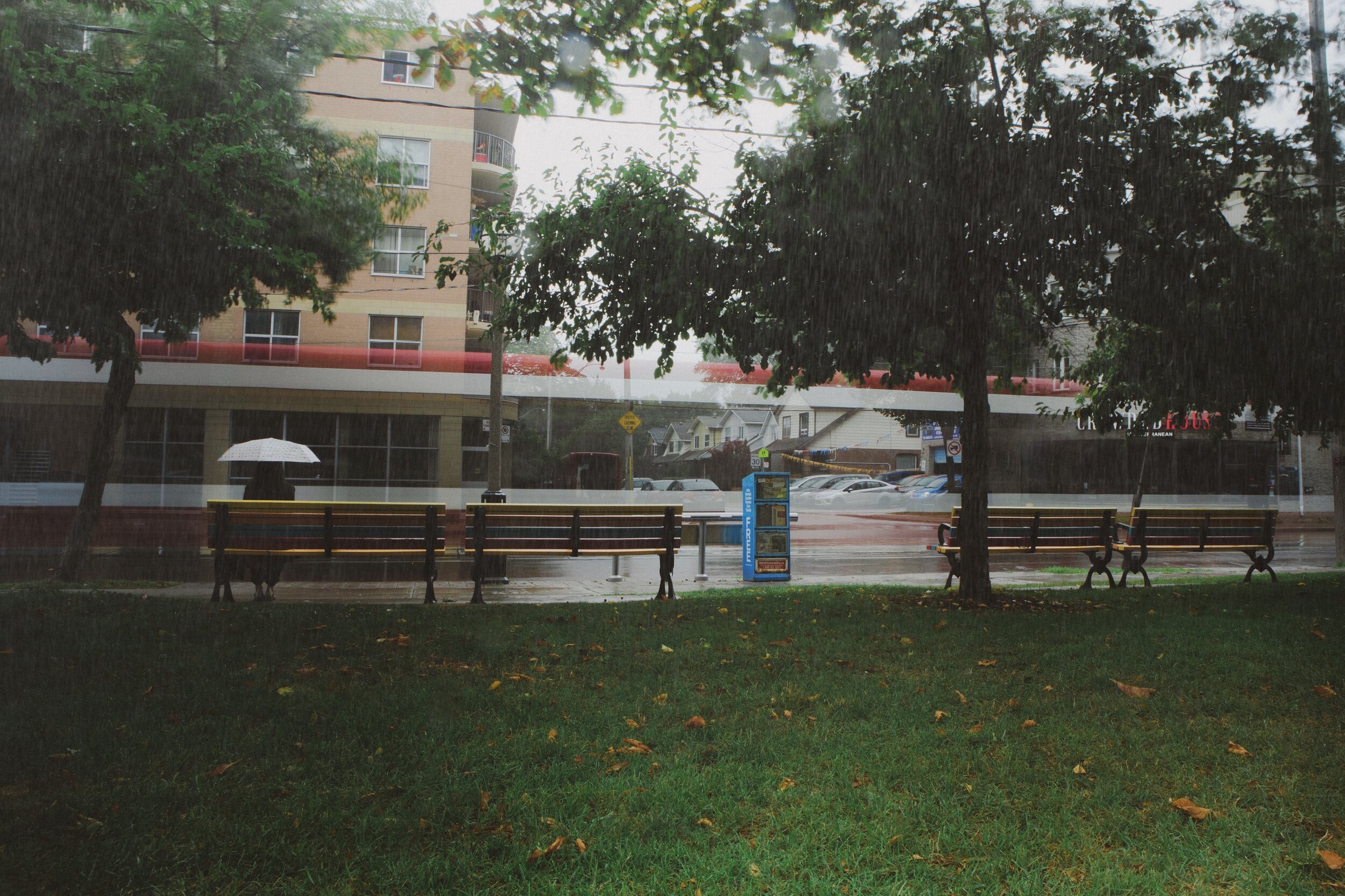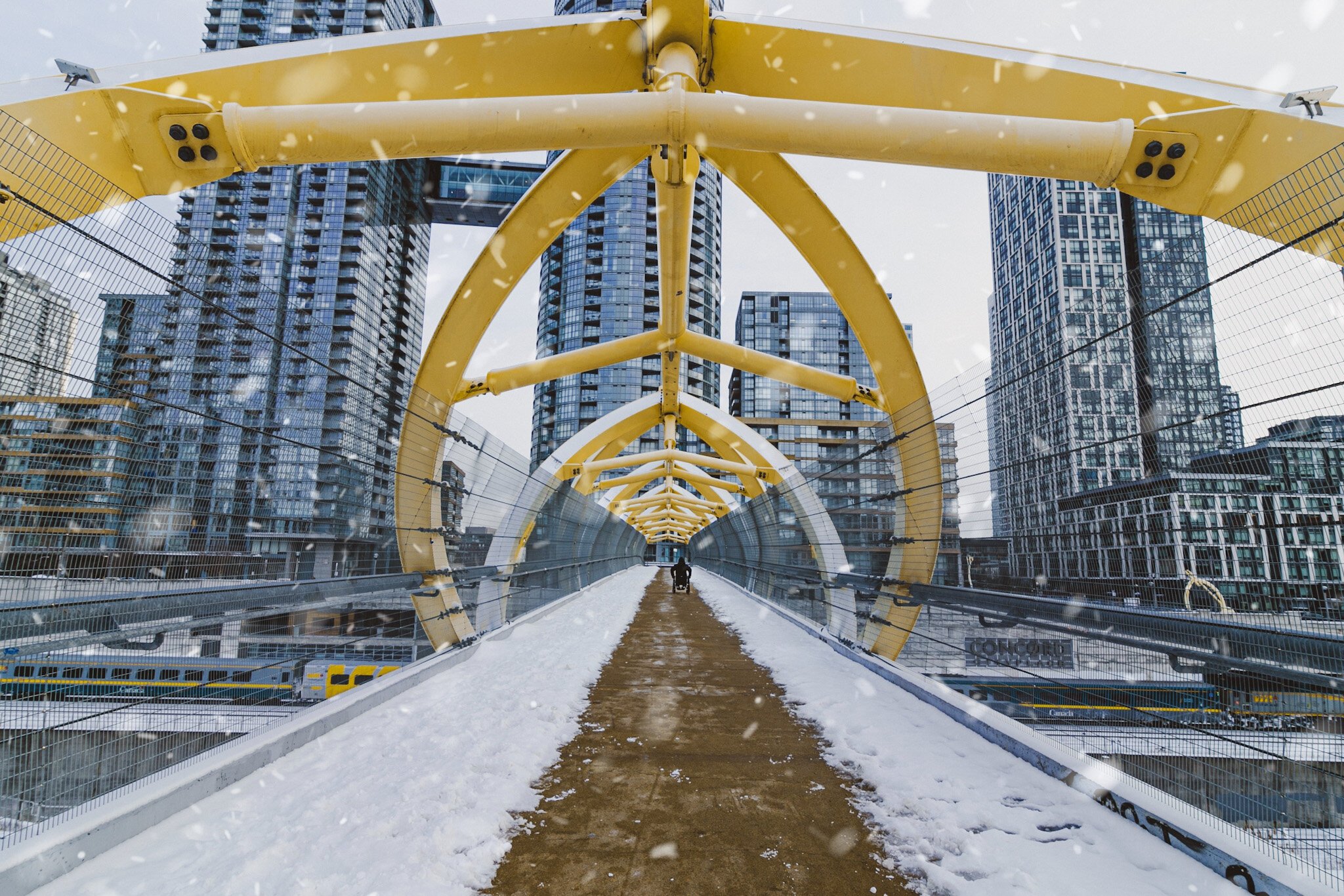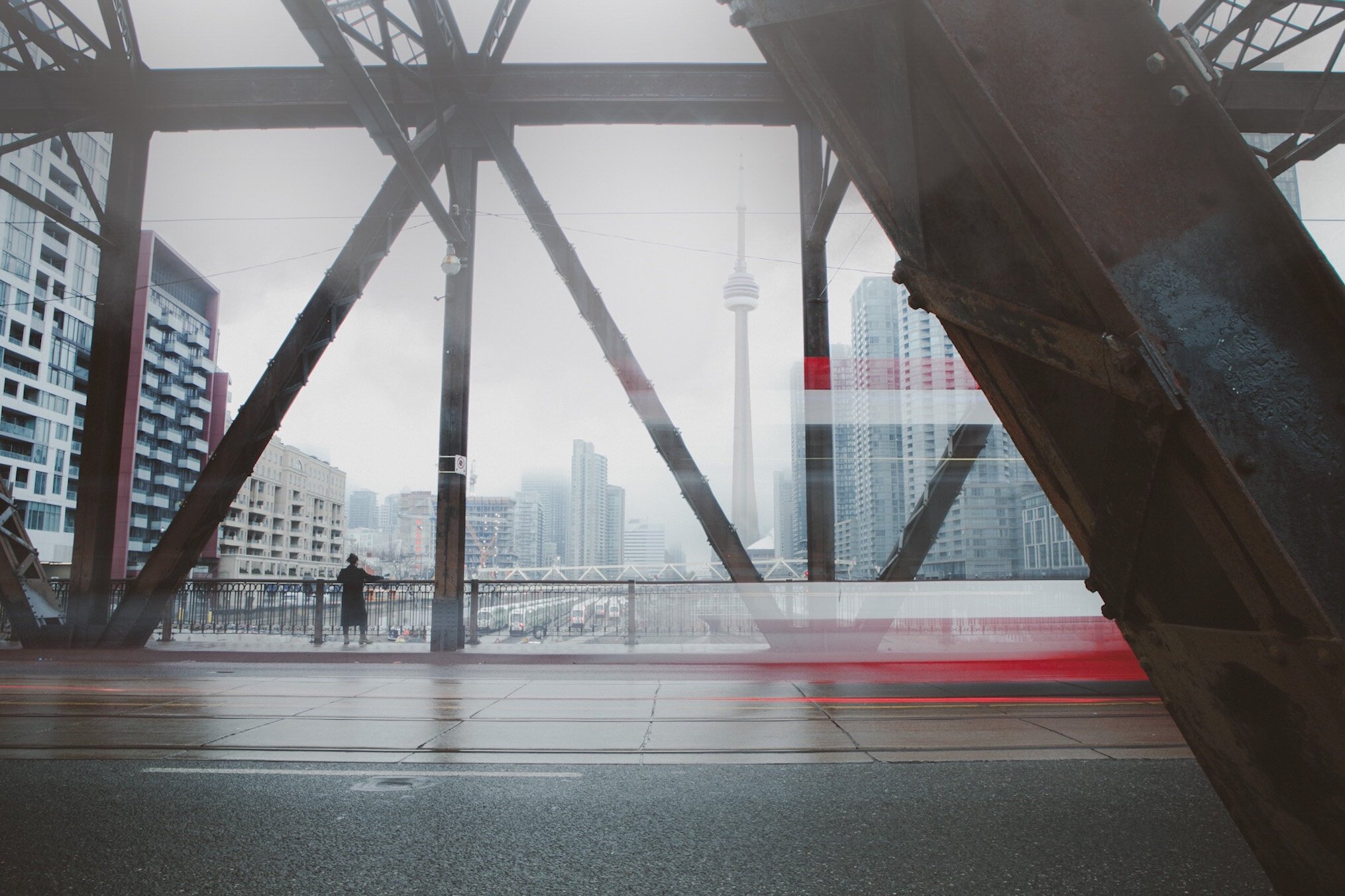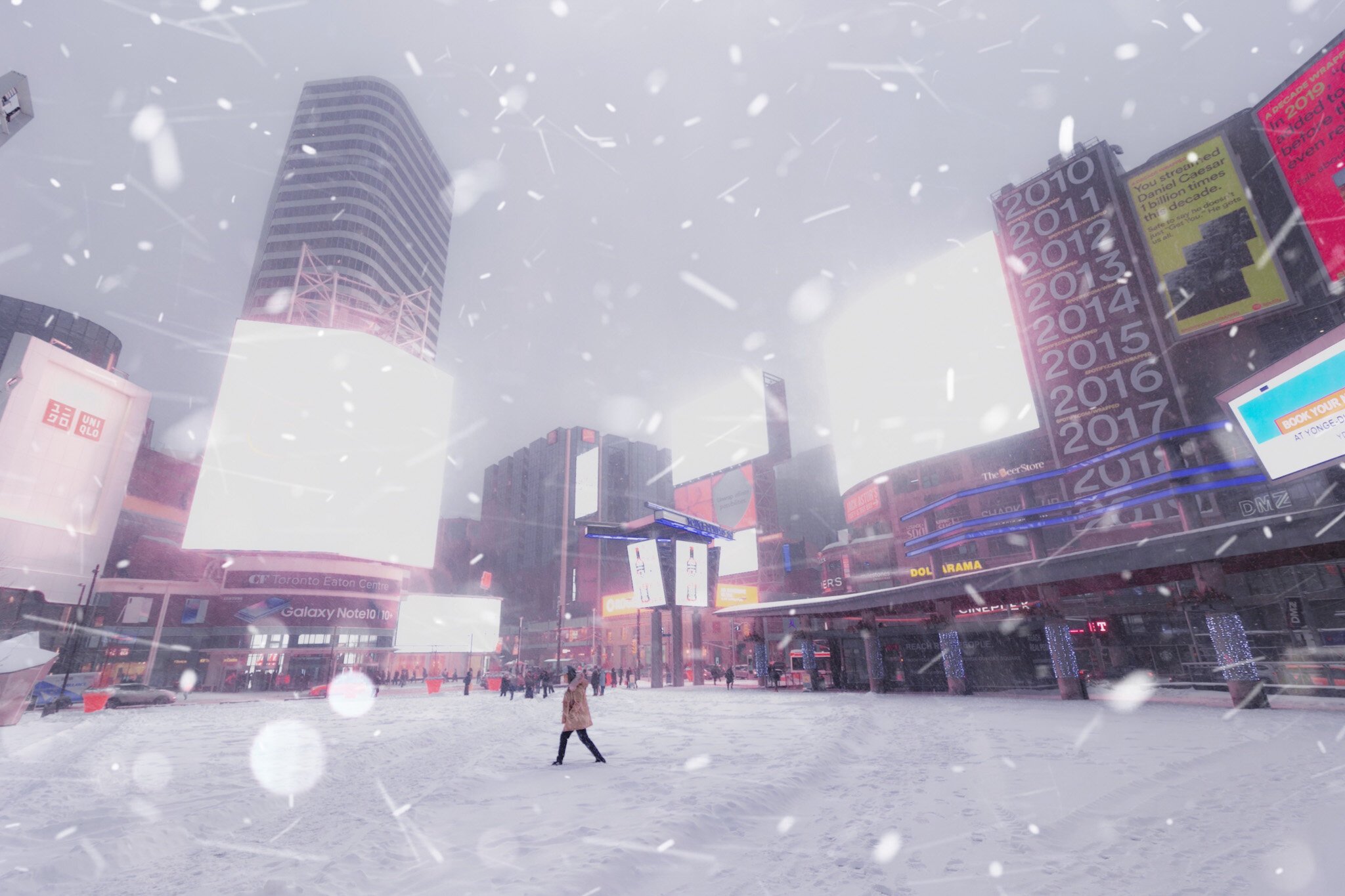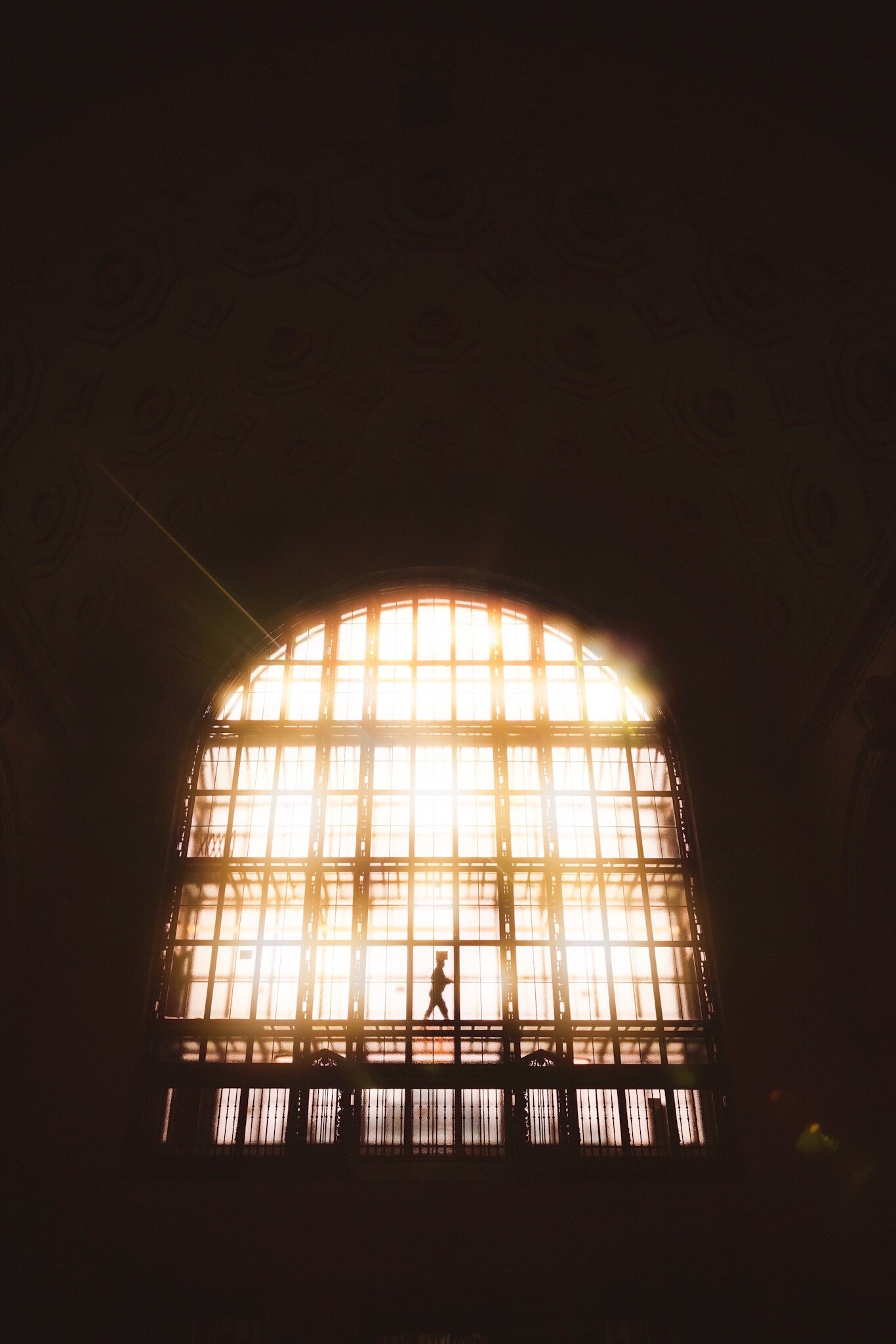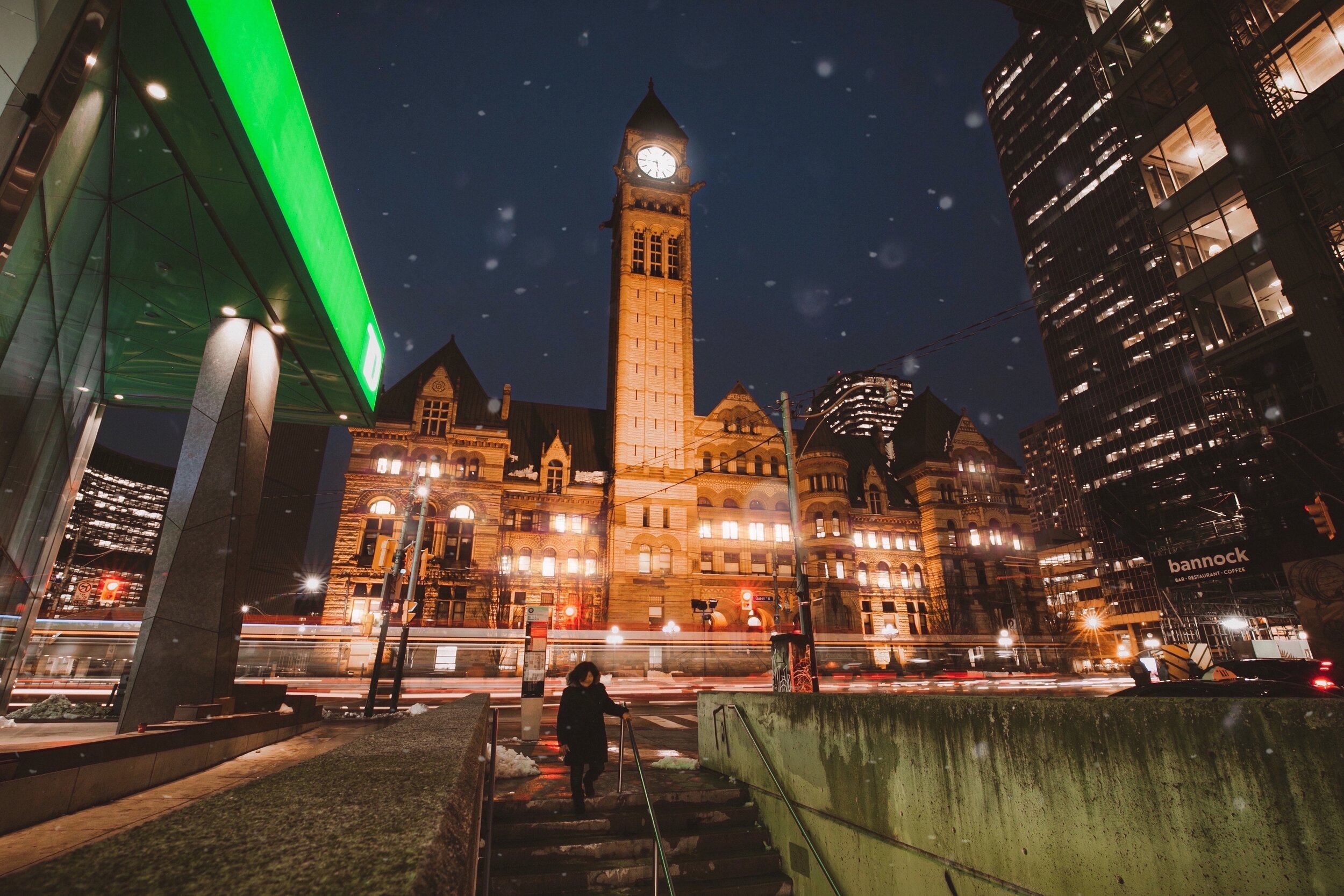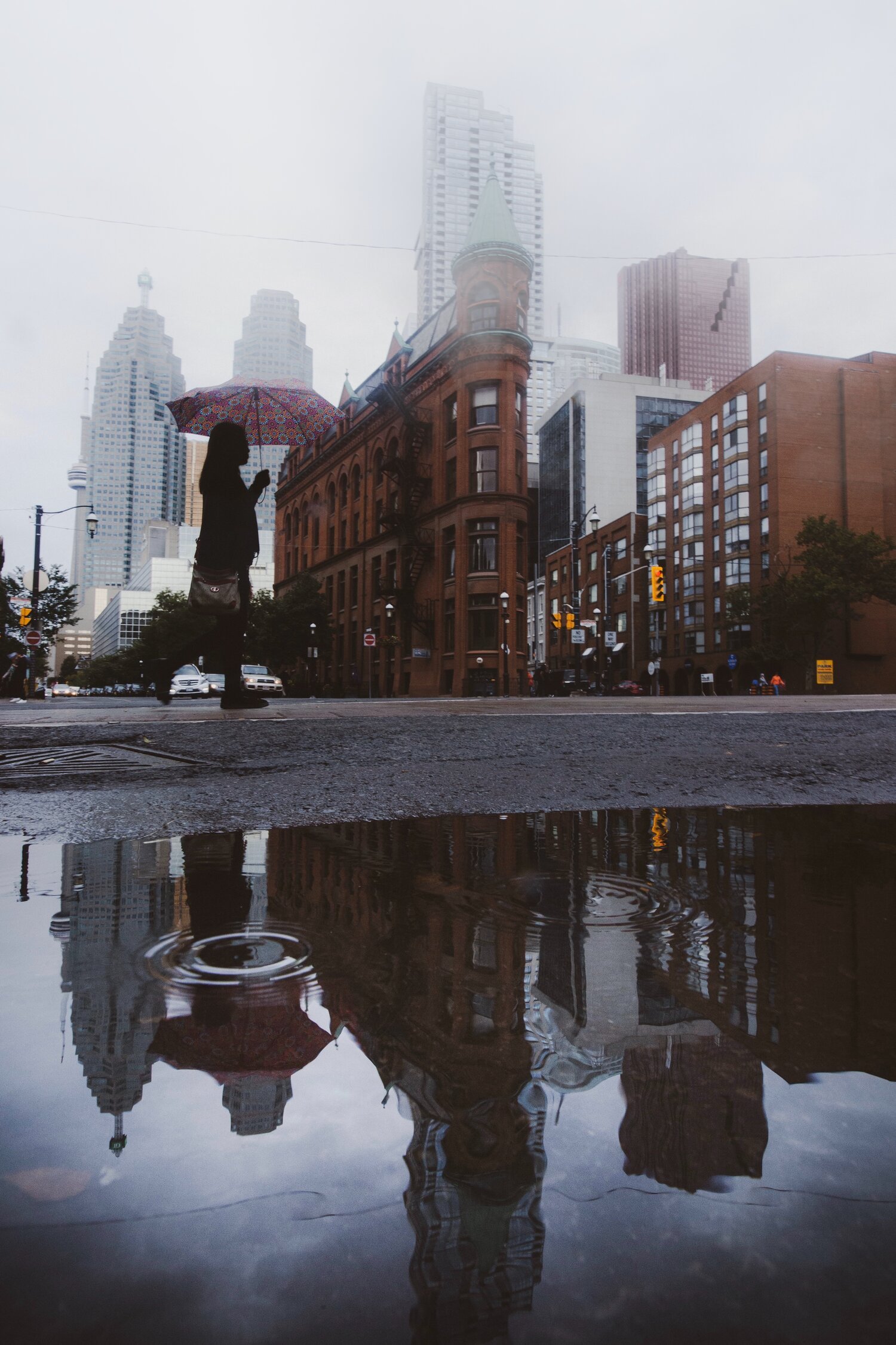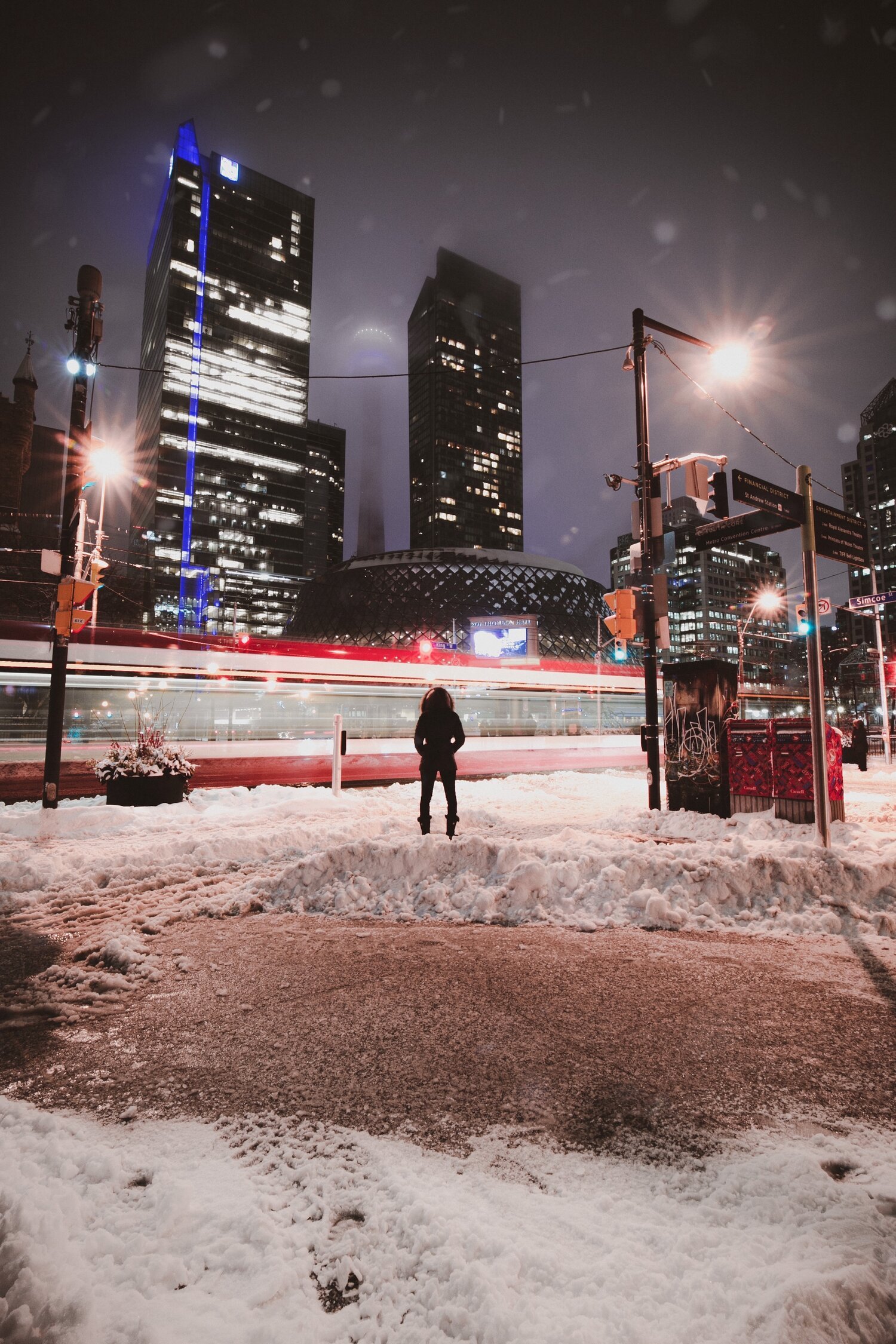
A HUMAN RIGHTS EXHIBITION
"First Look First" is Gilad Cohen's debut solo photography exhibition, presenting 18 large-scale, postcard-like images of Toronto. Each photograph subtly features a person from the Greater Toronto Area who has faced a unique human rights challenge. The exhibition contrasts the city's beauty with the often-hidden injustices experienced by its residents, encouraging viewers to look beyond the surface and recognize the human stories around them. What we see when we first glance at the city can be vastly different from what we discover when we truly take the time to look.
Cohen's work reimagines traditional human rights photography by moving away from exploitative and colonial tropes. Instead of capturing people in their most vulnerable moments, he focuses on preserving their dignity while reflecting on the coexistence of beauty and injustice. "First Look First" invites viewers to reconsider how they see and represent human struggles, urging a deeper, more compassionate approach to storytelling.
Take a minute to download ARTIVIVE and bring the work to life.
Best viewed on another screen so you can free up your phone. Trust me, it’s worth it.
I'll Be Your Friend In The Daylight Again
2019
Boarding the streetcar is George, a young man who has been struggling with homelessness in Toronto for many years. Nearly 10,000 people in Toronto are homeless on any given night while the nightly occupancy rate in Toronto shelters is at 98%. To learn more about homelessness in Toronto and to help combat it, visit horizonsforyouth.org
The Lights That Guide You
2020
Walking down the Eaton Centre tunnel is Levy, a man who has experienced anti-Semitism. In 2018, hate crimes targeting Jews represented 19 per cent of all hate crimes in Canada, more than any other group. To learn more about anti-Semitism in Canada and to help put an end to it, visit caef.ca
Spinning In Silence
2019
Sitting on the park bench in Leslieville is Delane, a survivor of childhood sexual violence. The exact prevalence of sexual offences against children in Canada is unknown as it remains among the most underreported crimes in Canada. Of police-reported offences in Canada, children and youth aged 17 and younger accounted for 58% of all victims of sexual violence. If you or someone you know is a victim of childhood sexual violence or to support others who are, visit childdevelop.ca
We Won't Look Back
2020
Crossing the Puente de Luz bridge is Scott, a survivor of an anti-gay hate crime that left him partially paralyzed. Although largely undocumented, police-reported hate crimes targeting gender identity, gender expression, and sexual orientation rose 16% in 2017 to 204 incidents, compared with 176 incidents in 2016. If you or someone you know is a victim of an anti-gay hate crime or to support other victims, visit the519.org
Wander On
2019
Standing in front of the streetcar in the Financial District is Troy, a young man who grew up in foster care. Troy’s mother is a survivor of the Sixties Scoop, a colonial Canadian practice where Indigenous children were taken from their homes and placed with non-Indigenous families. Spanning four decades, it is estimated that at least 20,000 Indigenous children were affected by this policy. To learn more about the Sixties Scoop and to support survivors, visit nationalhealingfoundation.com
Love Is The Coal That Makes This Train Roll
2020
Standing at the Sir Isaac Brock Bridge is Heath, a victim of transphobia. Approximately 98% of transgender individuals in Canada have reported at least one experience with transphobia, while 74% of trans individuals faced verbal violence and 37% have experienced physical violence. If you or someone you know is experiencing transphobia or to support others who are, visit egale.ca
Angel
2021
Walking through the archway at the Princes’ Gate is Maria Shepherd, a woman who was wrongfully convicted and incarcerated in Toronto for manslaughter. After a 25-year legal battle, Maria was exonerated on February 29, 2016 after it was found that faulty and unreliable evidence was used to convict her. According to research conducted by University of Ottawa, Maria is one of at least 70 people to have been wrongfully convicted and exonerated in Canada. This figure, however, is an estimate, and there are likely many more. To learn more about wrongful convictions and to support exonerations in Canada, visit innocencecanada.com
Over Top The Ceiling
2019
Walking across the grounds of Toronto City Hall is Mandi, a survivor of sexual violence. In Canada, there are approximately 460,000 sexual assaults every year with only 5% of survivors reporting to the police. One in three women and one in six men will experience some form of sexual violence in their lifetime, while only one in three Canadians understand what sexual consent means. If you or someone you know is a victim of sexual violence or to support others who are, visit trccmwar.ca
Crossing
2020
Walking through Dundas Square is Hyuk, a North Korean refugee living in Toronto. It is estimated that between 100-1,000 North Korean refugees are currently living in Toronto. Due to strict immigration policies that make it challenging for North Korean refugees to come to Canada, many of them are underground and in hiding. North Koreans flee from North Korea due to a lack of proper nutrition, severe limitations on their rights and freedoms, and a lower quality of life. It is also estimated that there are between 80,000-250,000 North Koreans currently detained in modern day concentration camps. To learn more about North Korean refugees in Canada and to support them, visit hanvoice.ca
Unnamed
2019
Walking in the hall of the Union Station window is an anonymous individual, a symbolic representation of missing and murdered Indigenous women and girls. Described as a Canadian national crisis and a Canadian genocide, it is estimated that between 1980 and 2012, Indigenous women and girls accounted for 16% of all female homicides in Canada despite only representing 4% of the national female population. From 2001 to 2015, the homicide rate for Indigenous women in Canada was almost six times as high as the homicide rate for non-Indigenous women. It is estimated that anywhere from 1,000 to 5,000+ Indigenous women and girls have gone missing since the 1970s. To learn more about murdered and missing Indigenous women and children and to support, visit itstartswithus-mmiw.com
Queen
2020
Walking down the steps in front of Old City Hall is Laura, a survivor of St. Anne’s Residential School in Fort Albany, Ontario. Between 1831 to 1996, at least 150,000 Indigenous children in Canada were taken from their families and put into residential schools where they were isolated, had their culture disparaged, and in some cases forbidden to speak their first language or use their traditional names. In many cases, children were heavily beaten, chained or confined and many students were sexually abused. To learn more about this Canadian colonial practice and to support survivors of the residential school system, visit legacyofhope.ca
I Am The Sky
2019
Walking up the steps at Brookfield Place is Amy, a person struggling with addiction. It is estimated that 21.6% of Canada’s population meets the criteria for a substance use disorder and that over 8 million Canadians struggle from addiction. If you or someone you know is suffering from addiction or to help those who are, visit camh.ca
We Fall
2019
Crossing the street in front of the Gooderham Building is Zana, a woman who struggles with mental health, depression and anxiety. Between 10-16% of Canadians struggle with their mental health while recent studies show that this number is on the rise. If you or someone you know is struggling with their mental health or to support others who are, visit camh.ca
White Clouds I'm In
2020
Walking in front of the Aga Khan Museum is Sara, a survivor of domestic violence. Of all reported violent crimes in Canada, more than one quarter resulted from family violence, while 67% of victims are women and girls. While domestic violence is largely underreported, 79% of police reported intimate partner violence is against women. If you or someone you know is a victim of domestic violence or to support others who are, visit intervalhouse.ca
99 'Til Infinity
2020
Walking in front of the maple leaf at Nathan Phillips Square is Mohamad, a Syrian refugee who settled in Canada in 2015. Mohamad is one of at least 25,000 Syrian refugees who was admitted to Canada since the Syrian civil crisis erupted. Despite being safe from war, Syrian refugees continue to face multiple barriers in Canada including racism, access to stable employment, adequate housing, and a supportive community. To help support refugees from Syria and other countries, visit acctonline.ca
Anchor The Night
2020
Walking past the doors of the Royal Ontario Museum is Alia, a victim of Islamophobia. In 2015, the city of Toronto reported that although hate crimes in general decreased by 8.2%, hate crimes against Muslims had increased. Canada-wide, Islamophobia grew by 253% from 2012 to 2015. To learn more about Islamophobia in Canada and to help put an end to it, visit nccm.ca
Waiting On Words
2020
Looking at the skyline is Tee, an Indigenous woman who grew up in Niisaachewan Anishinaabe Nation, Ontario, a community that was on a long-term water advisory. As of August 2021, there were 50 long term drinking water advisories in 31 First Nations communities across Canada meaning the only safe way to drink water is by boiling water or purchasing bottled water. Across Canada, 73% of First Nations’ water systems are at a medium or high risk of contamination. To learn more about boil water advisories in Canada, visit fnha.ca
King
2020
Standing at the corner in front of Roy Thomson Hall is LaTanya, a cousin of Jermaine Carby, a Black man who was shot and killed by Peel police while being carded during a traffic stop in September of 2014. Carding, which was banned in Ontario in 2017, is the act of being stopped and asked by police to supply personal information at random. Prior to being banned, statistical evidence shows that Black Torontonians were 17 times more likely than a white person to be carded. Between 2013-2017 Black Torontonians were twenty times more likely than non-Black people in the city to die in an encounter with the police. In those same years, Black people made up 70% of the victims of fatal police shootings in Toronto. To learn more about anti-Black racism in Toronto and to help support a movement to stop it, visit blacklegalactioncentre.ca


